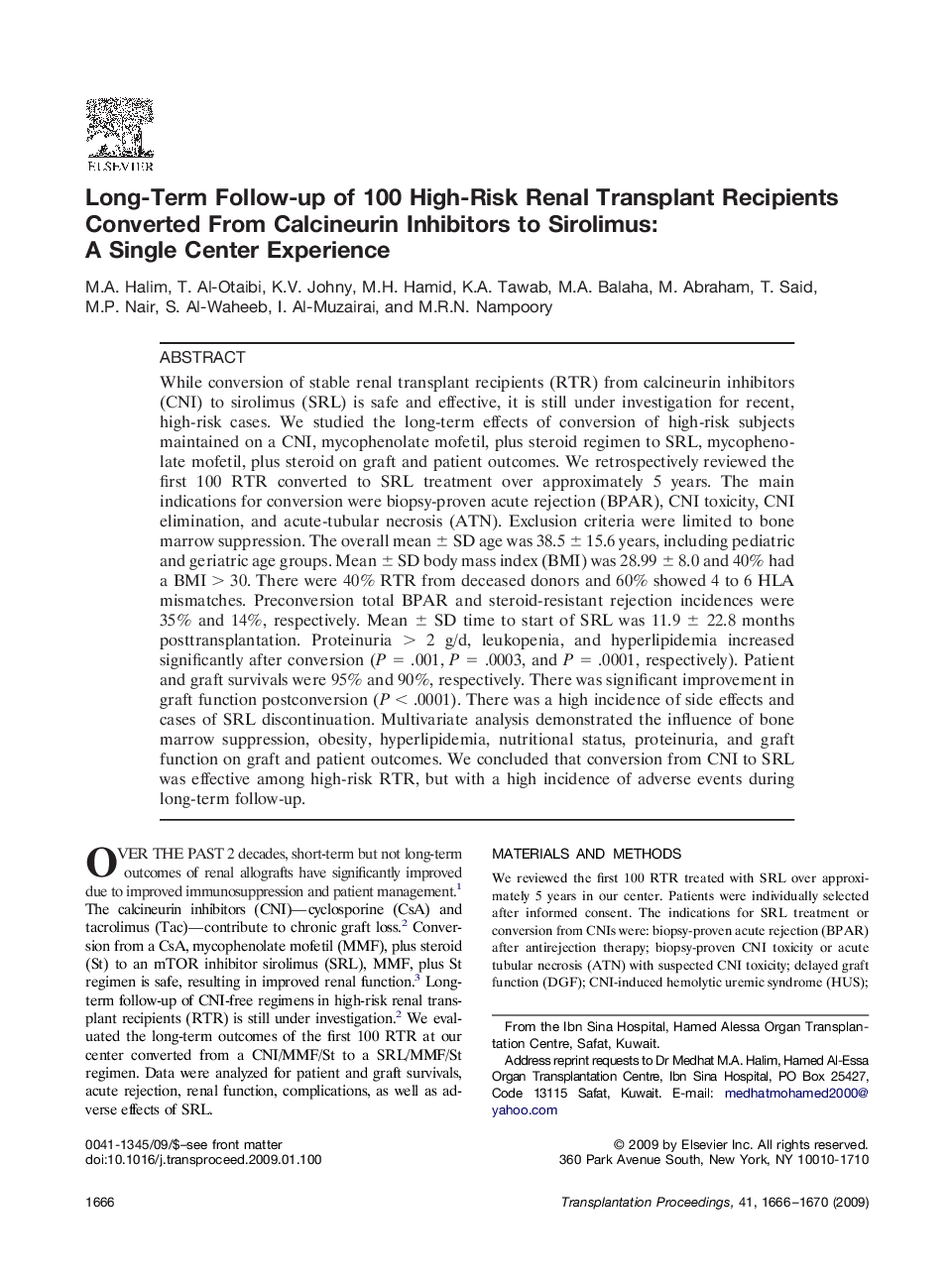| کد مقاله | کد نشریه | سال انتشار | مقاله انگلیسی | نسخه تمام متن |
|---|---|---|---|---|
| 4259262 | 1284568 | 2009 | 5 صفحه PDF | دانلود رایگان |

While conversion of stable renal transplant recipients (RTR) from calcineurin inhibitors (CNI) to sirolimus (SRL) is safe and effective, it is still under investigation for recent, high-risk cases. We studied the long-term effects of conversion of high-risk subjects maintained on a CNI, mycophenolate mofetil, plus steroid regimen to SRL, mycophenolate mofetil, plus steroid on graft and patient outcomes. We retrospectively reviewed the first 100 RTR converted to SRL treatment over approximately 5 years. The main indications for conversion were biopsy-proven acute rejection (BPAR), CNI toxicity, CNI elimination, and acute-tubular necrosis (ATN). Exclusion criteria were limited to bone marrow suppression. The overall mean ± SD age was 38.5 ± 15.6 years, including pediatric and geriatric age groups. Mean ± SD body mass index (BMI) was 28.99 ± 8.0 and 40% had a BMI > 30. There were 40% RTR from deceased donors and 60% showed 4 to 6 HLA mismatches. Preconversion total BPAR and steroid-resistant rejection incidences were 35% and 14%, respectively. Mean ± SD time to start of SRL was 11.9 ± 22.8 months posttransplantation. Proteinuria > 2 g/d, leukopenia, and hyperlipidemia increased significantly after conversion (P = .001, P = .0003, and P = .0001, respectively). Patient and graft survivals were 95% and 90%, respectively. There was significant improvement in graft function postconversion (P < .0001). There was a high incidence of side effects and cases of SRL discontinuation. Multivariate analysis demonstrated the influence of bone marrow suppression, obesity, hyperlipidemia, nutritional status, proteinuria, and graft function on graft and patient outcomes. We concluded that conversion from CNI to SRL was effective among high-risk RTR, but with a high incidence of adverse events during long-term follow-up.
Journal: Transplantation Proceedings - Volume 41, Issue 5, June 2009, Pages 1666–1670